Painting is an art form that sparks creativity and can be done by anyone, but some paints are better than others. Whether it’s custom murals or finger painting with toddlers, knowing the differences between tempera paint and washable paint can save a lot of headaches.
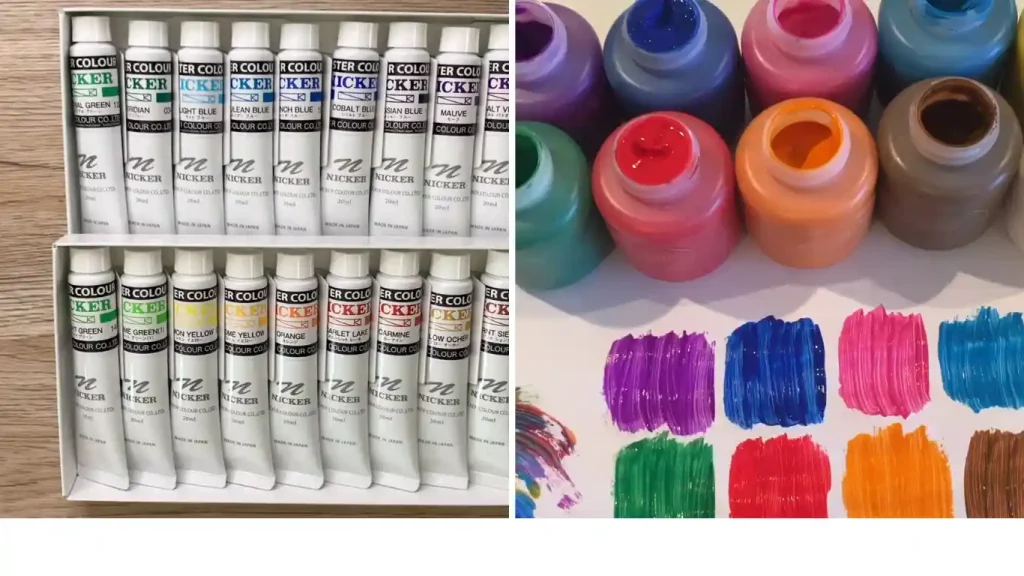
Understanding which type of paint to use in different scenarios can mean the difference between lasting artwork and accidental messes. Let’s explore their individual attributes so you can make an informed decision for your next creative project.
Tempera Paint vs. Washable Paint: Deciding Factors
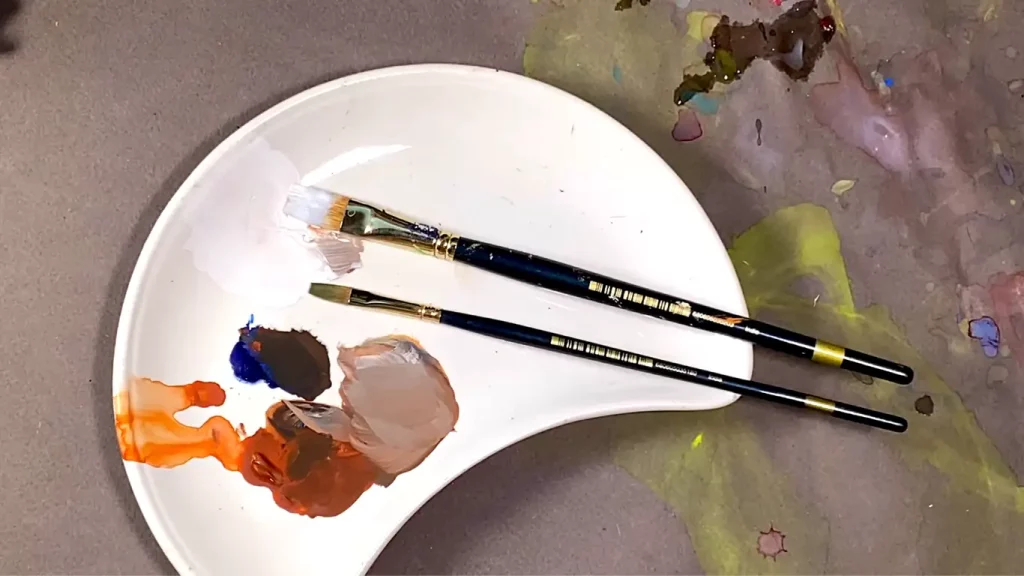
Drying Time & Appearance:
The first major difference between tempera and washable paints is their drying time. Tempera is incredibly fast-drying, often becoming completely dry within 5 – 10 minutes. This makes it ideal for projects where a permanent finish is desired quickly.
Washable paints take longer to dry, sometimes up to four to six hours, which gives artists more flexibility when creating with them. Also, tempera tends to have a matte finish, while washability paints provide a glossy look.
Color Diversity:
If you want a striking and eye-catching project that stands out, tempera paint is the way to go. Its intense pigments create bright and deep hues that can be very striking.
But, if you are looking for something more subdued or pastel, washable paint may be the better choice as it is often available in a wider range of color options. The subtler shades of washable paint can give your art piece a softer hue while still allowing you to achieve the desired effect.
Opacity:
The opacity of tempera paint tends to be lower than that of washable paints; this means that even multiple coats will not produce complete coverage on most surfaces.
On the other hand, washable paints are much more opaque and can provide full coverage in fewer layers. If you’re looking for vivid colors that stand out from the surface beneath them, then washable paints would probably be your better option.
Viscosity:
Tempera paints provide better control of the paint in projects due to their thick, viscous nature. It’s easier to maintain a consistent color when applying it compared to thinner, washable paints, which tend to spread out more easily on the surface.
But, this thicker viscosity can make it tough to spread evenly and could leave you with lumps or streaks. It’s important to determine what level of viscosity you need for your project before deciding on the type of paint.
Safety & Cleanup:
When it comes to safety, both tempera and washable paints are considered non-toxic, meaning they are safe for use by children and adults alike. The main difference between tempera paint and washable paint in terms of washability is that washable paint is specifically designed to be easily washed off of skin and clothing using just water, while tempera paint may be more difficult to remove.
This is because washable paint is made with special washable resins that allow it to be easily removed with water, while tempera paint is made from a mixture of water and pigment, which makes it less washable. But, let it be clear that tempera paint is also washable in its own right.
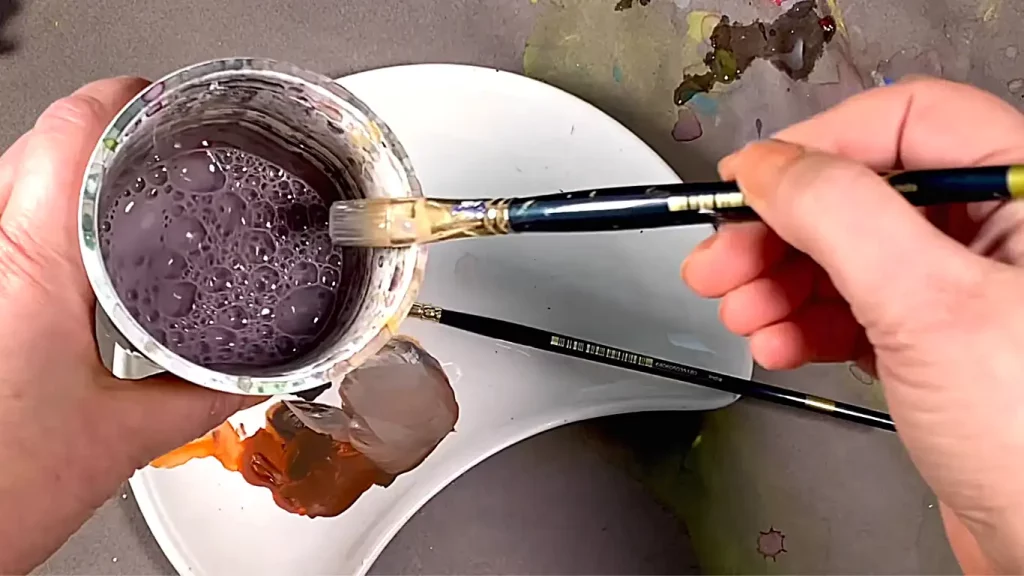
Durability:
Another important factor when choosing between tempera and washable paints is durability and versatility. Because tempera dries so quickly, it does not last as long as other types of paints once applied onto surfaces such as paper or canvas.
In contrast, washable paints tend to be much more durable once applied and remain vibrant for longer periods of time without fading or discoloring. Tempera paintings may last longer than expected under ideal conditions but generally do not hold up as well as those created with washable paints in harsh environments or extreme weather conditions. So if you need a long-lasting artwork solution, then washable paint may be your better option here.
Cost:
Although typically more costly, tempera paint may be worth the extra investment as it provides an even finish with a single coat. On the other hand, washable paint tends to be less expensive but could end up costing more if multiple coats are needed to get adequate coverage.
It can therefore be helpful to factor in both the cost of the initial purchase and the amount of paint that might be required for a given project when considering which type of paint might be best suited for a particular job.
Versatility:
If you’re looking to add a personal touch to items made of fabric, then washing paint is a clear choice. From a single shirt to lampshades and furniture upholstery, washing painting can make all kinds of materials look great with a minimum of fuss.
Tempera paint, on the other hand, is much better suited for hard surfaces like paper and wood. Although both types of paint are versatile in terms of colors and mix-ability, only washable paint really provides users with the ability to customize fabric materials with beautiful colors.
Advantages of Tempera Paint:
- One of the biggest advantages of tempera paint is that it produces vibrant and rich colors. This is because the pigments used in tempera paint are more concentrated than those used in other types of paint, such as watercolor or oil paint.
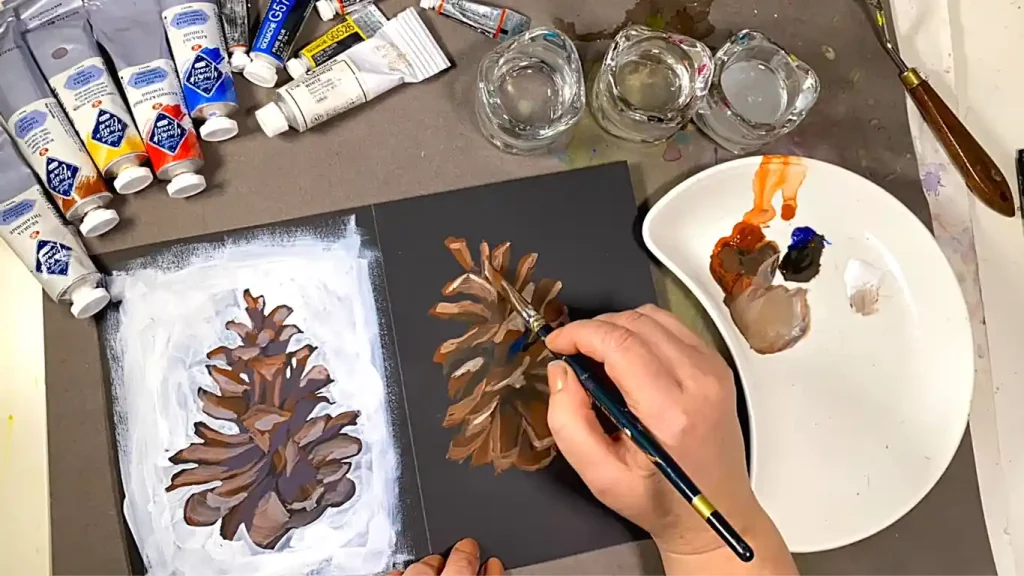
Also, the pigments in tempera paints are suspended in a binder that helps to make the colors more opaque, resulting in brighter and more vibrant colors. Though the paint is not permanent, there are ways that you can follow to make the paint permanent. You can also turn tempera paint into acrylic.
- Another benefit of tempera paint is its ease of use. This type of paint is typically sold in powdered form, which can be mixed with water to create a workable consistency. Tempera paint is also very forgiving, meaning that it is easy to correct mistakes. Because of this, it is ideal for beginners or for those who are looking for a quick and easy way to produce high-quality results.
- Apart from being easy to use, tempera paint is also very durable. Once it dries, tempera paint is resistant to fading, chipping, and peeling. This makes it a great choice for paintings that will be displayed in high-traffic areas or for those who want their paintings to last for many years.
- Tempera paint also has the advantage of being non-toxic. This means that it is safe for children to use and that there is no need to worry about harmful fumes or chemicals. Tempera paint is also less likely to cause allergic reactions than other types of paints, so it is suitable for people with sensitive skin.
- In addition to being non-toxic and durable, tempera paint is also very affordable. For those on a budget, this type of paint is usually available in large quantities at a relatively low price. Also, because tempera paint dries quickly, you won’t need to purchase as much of it as you would other types of paints.
- The versatility of tempera paint is another advantage to mention. This type of paint can be used on a variety of surfaces, including paper, cardboard, wood, rocks, windows, ceramic, and fabric. You can also use them on metals and walls for creating beautiful artwork.
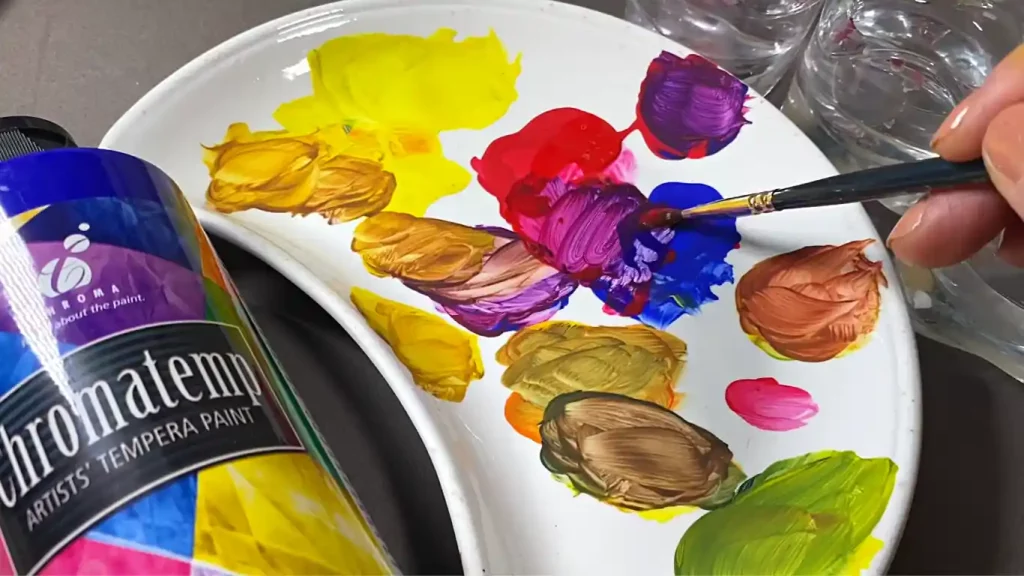
Besides that, tempera paint can be used with a variety of painting techniques, such as brushing, sponging, and stenciling. Due to this, it is an excellent choice for artists who wish to experiment with different styles and mediums.
- Finally, another advantage of tempera paint is that cleanup is easy. This type of paint washes off easily with soap and water, making it a good option for people who prefer to avoid using harsh chemicals.
Disadvantages of Tempera Paint:
- One of the primary disadvantages of tempera paint is that it is not very lightfast. Light fastness is a measure of a paint’s resistance to fading when exposed to light. Tempera paint generally has poor lightfastness, which means that it will fade over time if it is exposed to sunlight. This can be a problem for artists wishing to preserve their paintings.
- There is also the disadvantage of tempera paint not being very durable. Tempera paintings are susceptible to damage from water, humidity, and other environmental factors. This means that they are not ideal for use in areas where they may be exposed to these elements.
- Because tempera paintings are not very durable, they require special care in order to preserve them. For example, tempera paintings should be stored in cool, dry places and should not be exposed to direct sunlight. Aside from that, they should be protected from moisture and humidity by being kept in airtight containers.
- Tempera paint is not suitable for all surfaces. It is not recommended for use on paper or cardboard as it may cause the paper to warp or discolor over time. Additionally, tempera paint should not be used on fabric as it may cause the fabric to shrink or bleed.
- Another disadvantage of tempera paint is that there are limited colors available. Tempera paint is typically only available in white, black, and a few other basic colors. This can be limiting for artists who want to create more complex and colorful paintings.
- Tempera paint is also not easy to find as it is not widely available in stores. It can often be difficult to find the specific colors and brands that an artist needs, which can make it frustrating to work with this type of paint.
- Lastly, tempera paint can be messy and difficult to clean up if it spills or splatters onto clothing or other surfaces.
Advantages of Washable Paint:
- Washable paint is very easy to use. It can be applied with a brush, roller, or sprayer, and it cleans up easily with soap and water. Paint like this comes in a variety of colors so that you can choose the perfect color for your project.
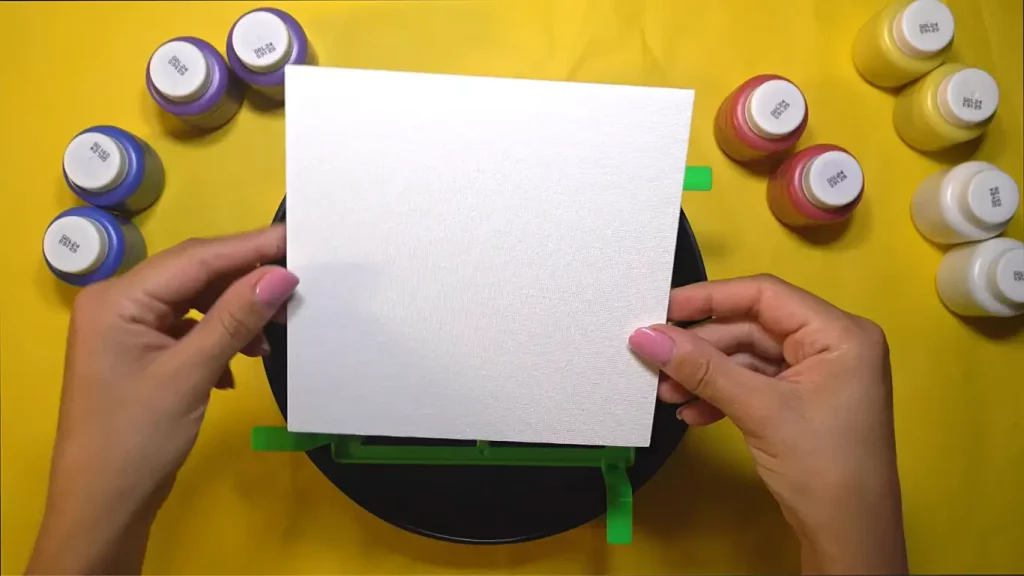
- Washable paint is also very durable. It resists fading and chipping, so it will look great for years to come. This type of paint is also easy to touch up, so you can keep your home looking its best.
- Washable paint is very affordable. It is typically less expensive than other types of paint, so it is a great option for those on a budget. Also, washable paint often goes on sale, so you can save even more money on your project.
- Washable paint is also low in volatile organic compounds (VOCs). VOCs are chemicals that can be released into the air, and they have been linked to health problems such as headaches, nausea, and respiratory problems. Washable paint has a low VOC content, so it is a safer option for your home.
- You can easily clean washable paint. You can simply wipe it down with a damp cloth or sponge, and it will come clean in no time. This type of paint is also resistant to staining, so you won’t have to worry about ruining your furniture or carpeting.
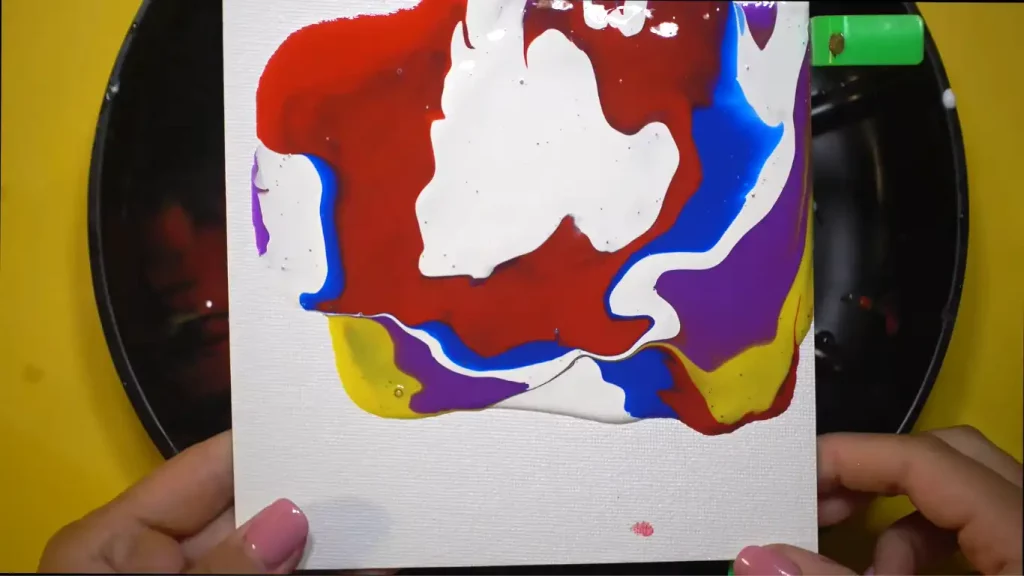
- Washable paint is also safe for children and pets. This type of paint does not contain lead or other harmful chemicals, so you can feel confident that your family is safe from harm. Plus, washable paint dries quickly, so you need not be concerned about your children or pets getting sick from exposure to wet paint fumes.
Disadvantages of Washable Paint:
- One of the biggest disadvantages of washable paint is that it does not appear as vibrant as regular paint. This is because washable paint contains less pigment than regular paint, and therefore will not be as bold or vibrant when applied to a surface.
- Washable paint is also not as durable as regular paint, which means that it is more likely to chip, fade, or peel over time. If you are looking for paint that will last for many years, washable paint is not the best option.
- It is also disadvantageous to washable paint the fact that it is more expensive than regular paint. These paints contain specially formulated ingredients that make them more resistant to stains and water and thus cost more than regular ones.
- If you decide to use washable paint in your home, you should be aware that it can be difficult to remove if you ever want to change the color or style of your decor. This is because washable paint does not come off easily with traditional painting methods like sanding or stripping.
- Washable paint also requires special cleaning products in order to keep it looking its best. These products can be expensive and may not be readily available at your local store.
- Another disadvantage of washable paint is that it can be hard to apply evenly on a surface. This is because the consistency of washable paint is often thinner than regular paint, which can make it difficult to spread evenly on a wall or piece of furniture.
- Lastly, another downside of washable paint is that there is often a limited color selection available. This is because not all manufacturers produce washable paint in every color, so you may have to search around to find the perfect shade for your needs.
Conclusion:
In conclusion, tempera paint and washable paint have a few differences that make them suited to different projects. Washable paint is better for younger kids and more casual projects, while tempera paint is more vigorous and can create vivid colors once it dries. Whichever type of paint you choose, remember to be mindful of safety precautions regarding your project. Have fun.

S. Pushon is a paint expert, self-taught artist, and currently working as an adviser in the paint industry as a Quality Improvement and Development Assistant.
An artist by heart, he draws remarkable art pieces and as a professional paint industry individual, he seeks the insight and shares with enthusiasts. Read more…
